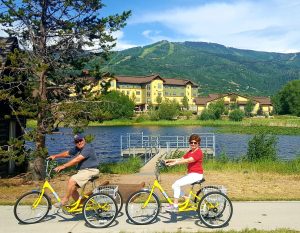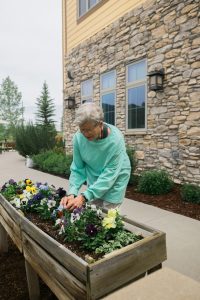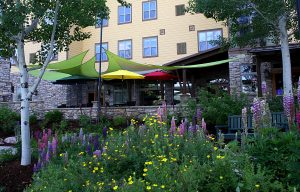
Posted: May 7, 2025
Like other life transitions, retirement can be filled with a variety of challenges and emotions. Along with a new sense of freedom, seniors transitioning to retirement may have concerns about finances, how they’ll spend their time, and if they’ll feel a sense of purpose. While transitioning from work to retirement may be difficult, understanding strategies to combat the common struggles of retirement can help seniors stay healthy and find purpose in this new phase of life.
 Many seniors transitioning to retirement may begin this new chapter feeling excited and optimistic. Retirement often represents the long-awaited opportunity to explore hobbies, travel, or spend more time with loved ones. However, once the initial excitement fades, it’s not uncommon for retirees to face feelings of loneliness, depression, or a decline in physical health. Without the structure and routine that work once provided, it’s easy to slip into patterns of inactivity and isolation. That’s why prioritizing both emotional and physical well-being is essential for a fulfilling retirement. Establishing a daily routine that include regular exercise and mental engagement can help retirees stay vibrant, connected, and healthy.
Many seniors transitioning to retirement may begin this new chapter feeling excited and optimistic. Retirement often represents the long-awaited opportunity to explore hobbies, travel, or spend more time with loved ones. However, once the initial excitement fades, it’s not uncommon for retirees to face feelings of loneliness, depression, or a decline in physical health. Without the structure and routine that work once provided, it’s easy to slip into patterns of inactivity and isolation. That’s why prioritizing both emotional and physical well-being is essential for a fulfilling retirement. Establishing a daily routine that include regular exercise and mental engagement can help retirees stay vibrant, connected, and healthy.
One powerful way to protect your mental health and preserve your sense of identity after leaving the workforce is to prepare mentally for the transition. Understanding that life will look and feel different, and that’s okay. Anticipating big changes and reflecting on how they might impact your emotions can help you plan healthy ways to adjust. Acknowledge your feelings about retirement, even if they don’t match what others expect you to feel. Acceptance of change allows you to embrace the possibilities this new chapter offers.
Staying physically active is essential to living well in retirement. Without the structure of a daily work routine, it can be easy to fall into sedentary habits. Maintaining regular exercise and a balanced diet can have a profound impact on your energy levels, emotional well-being, and overall health.
If exercise hasn’t been part of your life, start slow. Choose something enjoyable, such as walking, hiking, or swimming, and aim for at least 30 minutes a day, five days a week. Learning a new sport or joining a gym can also double as a social outlet—keeping you physically fit and connected to others.
Retirement is also an ideal time to prioritize nutrition. More and more research links healthy eating to improved brain function, mood stability, and reduced risk of cognitive decline, including conditions like Alzheimer’s disease. A nutrient-rich diet gives your brain the fuel it needs to function at its best. Read more about the impact of nutrition on older adults.
 Loneliness is a common challenge during retirement, so building and maintaining social connections is key. Consider volunteering, joining a club, or getting involved with a church or community group—ideally before you retire. Creating a strong social circle outside of work helps ease the transition and protects against isolation. While enjoying solitude can be healthy, too much alone time can negatively impact both physical and mental health. In fact, studies show that older adults with active social lives live longer, healthier lives than those who are more isolated. Read the Secrets to a Happy Retirement from the AARP here.
Loneliness is a common challenge during retirement, so building and maintaining social connections is key. Consider volunteering, joining a club, or getting involved with a church or community group—ideally before you retire. Creating a strong social circle outside of work helps ease the transition and protects against isolation. While enjoying solitude can be healthy, too much alone time can negatively impact both physical and mental health. In fact, studies show that older adults with active social lives live longer, healthier lives than those who are more isolated. Read the Secrets to a Happy Retirement from the AARP here.
Because many of us find our identity in our careers, seniors transitioning to retirement may find themselves questioning their sense of purpose. Purpose is more than staying busy, it’s about doing something that feels meaningful to you. Having a belief system or practice, such as faith, can help provide that deeper sense of meaning. Research shows that seniors who have a strong sense of purpose tend to live longer, healthier lives. Look for opportunities to stay connected and contribute, whether it’s by volunteering, mentoring, getting involved in your neighborhood, joining a faith group, or supporting a cause you’re passionate about. These activities can give your days direction and make waking up each morning something to look forward to.
Read more about starting your day with a renewed sense of purpose.
 For some retirees, moving to an independent living community where you can age in place is the perfect solution to finding purpose and staying physically and emotionally healthy. Having access to healthcare, amenities like elevated dining, housekeeping, and planned social activities with a built-in community is a great way to spend retirement.
For some retirees, moving to an independent living community where you can age in place is the perfect solution to finding purpose and staying physically and emotionally healthy. Having access to healthcare, amenities like elevated dining, housekeeping, and planned social activities with a built-in community is a great way to spend retirement.
Surrounded by picturesque mountains, the warm and nurturing atmosphere at Casey’s Pond in Steamboat Springs, Colorado inspires lifelong opportunities for retirees to grow and thrive. As a continuing care community, we offer a continuum of care that adapts to your needs as they change over time, truly allowing you to age in place with confidence. Our person-centered care empowers residents to pursue personal growth in a caring, pet-friendly community.
We’re here to walk alongside our residents through every chapter after retirement, providing support, stability, and a sense of belonging. At every level of living, we prioritize wellness and active longevity, helping residents thrive in a vibrant, close-knit community. Discover our tight-knit community where residents thrive with a focus on wellness and active longevity in all levels of living.We focus on wellness and active longevity in all levels of living.
The transition from work to retirement is exciting and challenging. As you prepare and plan for retirement, our community of experts is available to help answer questions you have and point you to helpful resources. Contact us today for more information and read testimonials about life at Casey’s Pond.